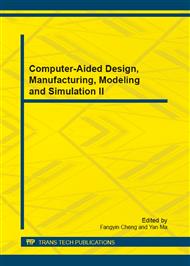p.1026
p.1031
p.1037
p.1042
p.1047
p.1052
p.1057
p.1061
p.1066
New Route to Improve Thermal Property of Phenolic Resin
Abstract:
A new route for improving the thermal property of phenolic resin was described. Firstly, a soluble preceramic polymer was synthesized by condensation polymerization of zirconium oxychloride, salicyl alcohol and acetylacetone in the presence of triethylamine at room temperature. A modified phenolic resin was then obtained via blending the preceramic polymer and phenolic resin in solution. The preceramic polymer was characterized by FTIR, NMR and GPC. The thermal property of the modified phenolic resin was also investigated by TGA. It was found that the preceramic polymer was composed of Zr-O-Zr as the main chain and the ligands (salicyl alcohol and acetylacetone) as the side chain. It pyrolyzed completely at 600°C and formed ZrO2 in nitrogen atmosphere. The results of TGA indicated that 5 wt% preceramic polymer could increase the thermal decomposition temperature and the char yield of the modified phenolic resin by 18°C and 25%, respectively. Moreover, the preceramic polymer allowed the char formation from phenolic resin at relatively low temperature.
Info:
Periodical:
Pages:
1047-1051
Citation:
Online since:
December 2012
Authors:
Keywords:
Price:
Сopyright:
© 2013 Trans Tech Publications Ltd. All Rights Reserved
Share:
Citation:


